Powerful Inventory Management Tools
Improve fulfillment efficiency and customer satisfaction by preventing stock-outs, forecasting customer demand, automating inventory tasks, and keeping inventory up-to-date across your marketplaces, stores and locations.
No monthly cost, completely free to use
What is the Fair Usage Policy?
To use Veeqo’s inventory features, you must ship at least 50% of your online orders using either our shipping rates or your own carrier rates connected to Veeqo.
When you sign up for the Priority plan, the Fair Usage Policy will no longer apply to your account. Use all our features with no restriction!
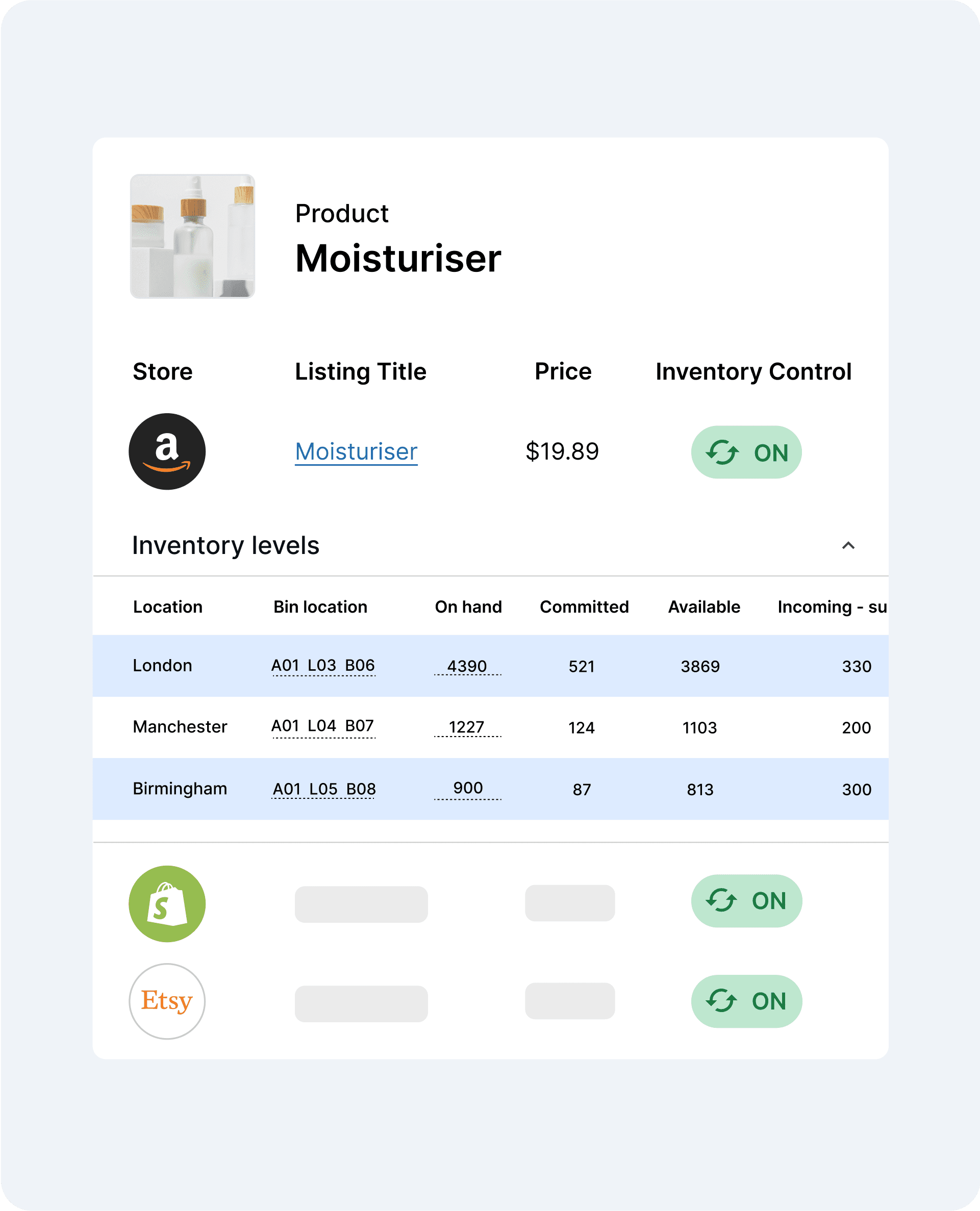
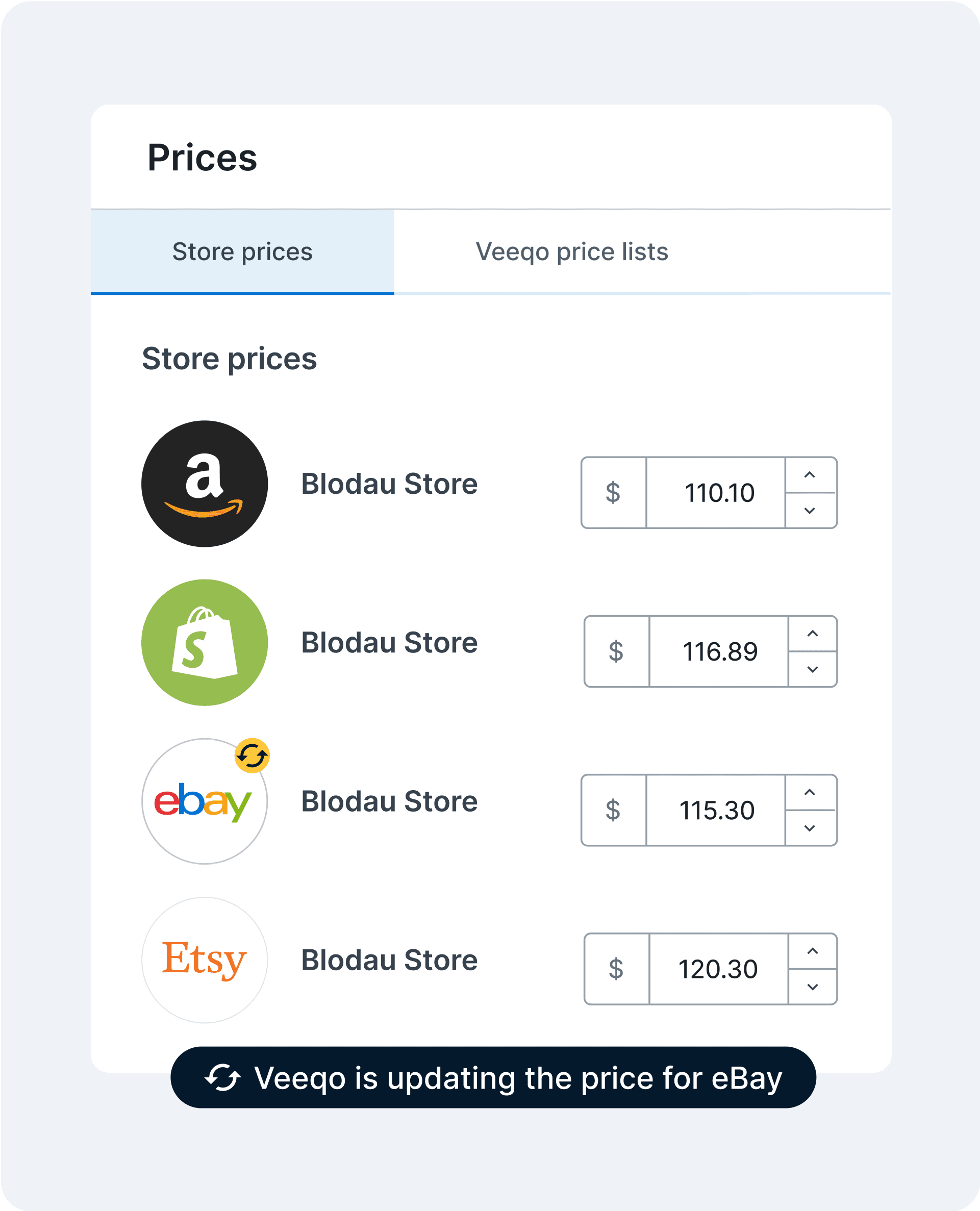
Adjust stock and listing prices in one place
Update stock and prices for products on every marketplace and store you connect to Veeqo from one place, saving you hours of manual admin time.
Your carrier, marketplace and store data - all in one place
Veeqo simplifies and scales with your shipping needs with customizable warehouse workflows, trusted carriers, and connections to all selling channels and marketplaces for you require.
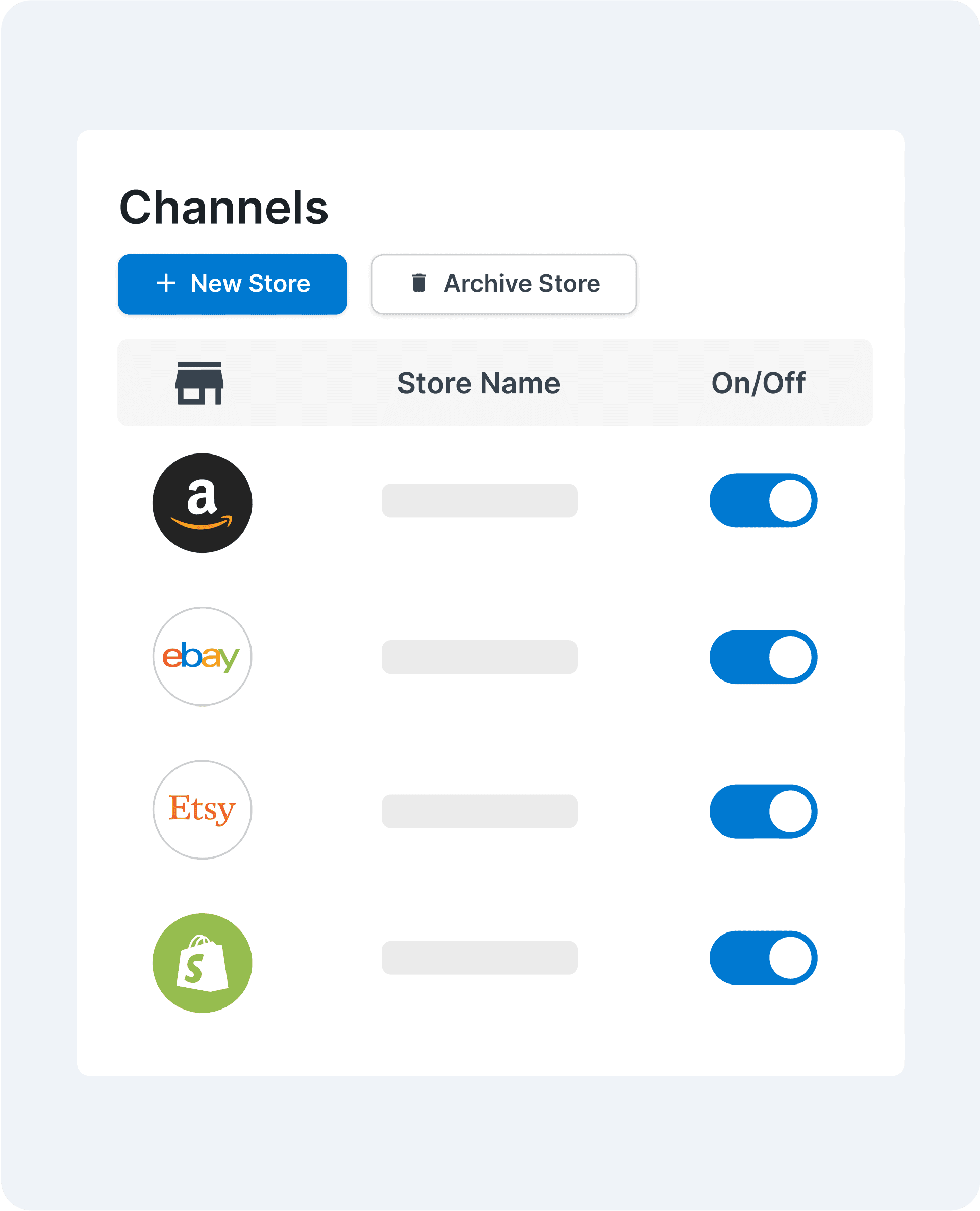
Integrates with over 50+ Stores & Carriers
Connect all of your stock levels to Veeqo for active inventory management, demand forecasting and so much more.

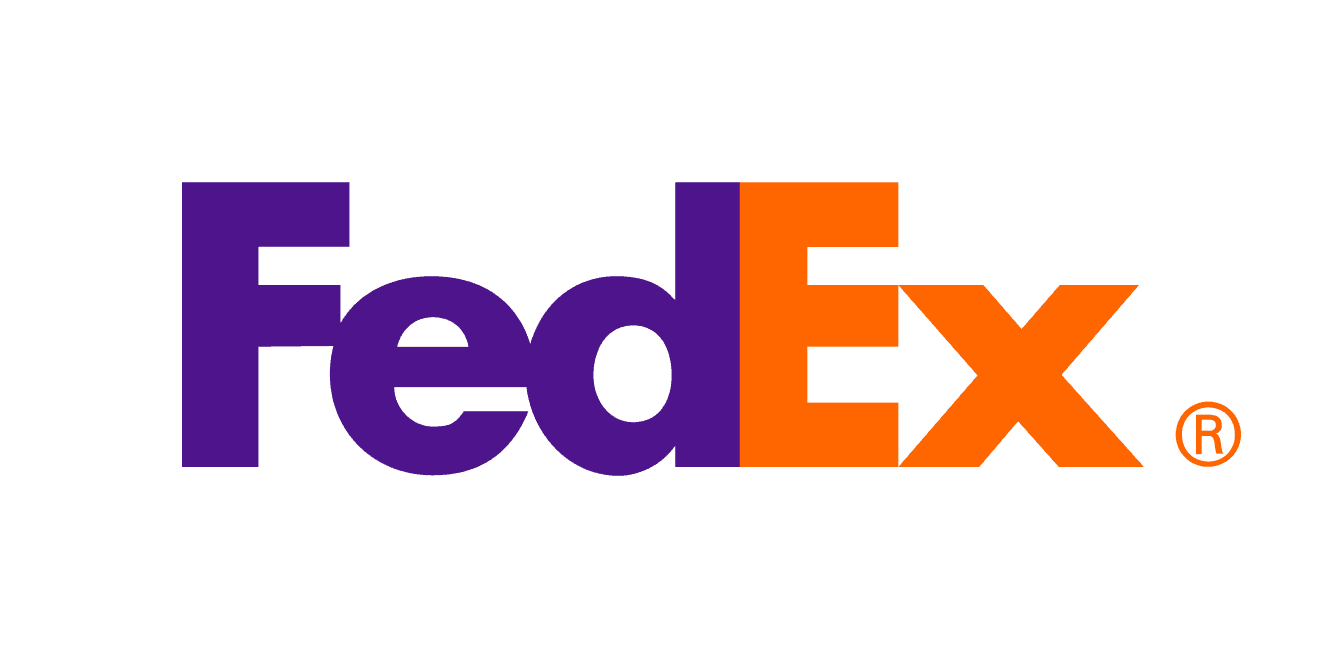






















eBay
Manage your eBay inventory with Veeqo

Royal Mail
Ship your multichannel orders with Royal Mail

FedEx
Ship your multichannel orders with FedEx

Amazon
Manage your Amazon inventory with Veeqo
Transfer and track stock across multiple warehouse locations
Transfer stock to other locations and track changes in available stock levels made from sales, purchase orders, location transfers, inventory counts and more.
Inventory rules to automate repetitive tasks
Inventory rules works with your stores to adjust and advertise different stock levels across every store you sell on. Inventory rules in Veeqo can:
Create urgency on your listings by showing stock levels that are lower than inventory actually on-hand
Set aside units for retail stores for walk-in customers
Leave a buffer of stock to prevent over-selling
Other merchandising tactics
Meet your Ebay listing limits
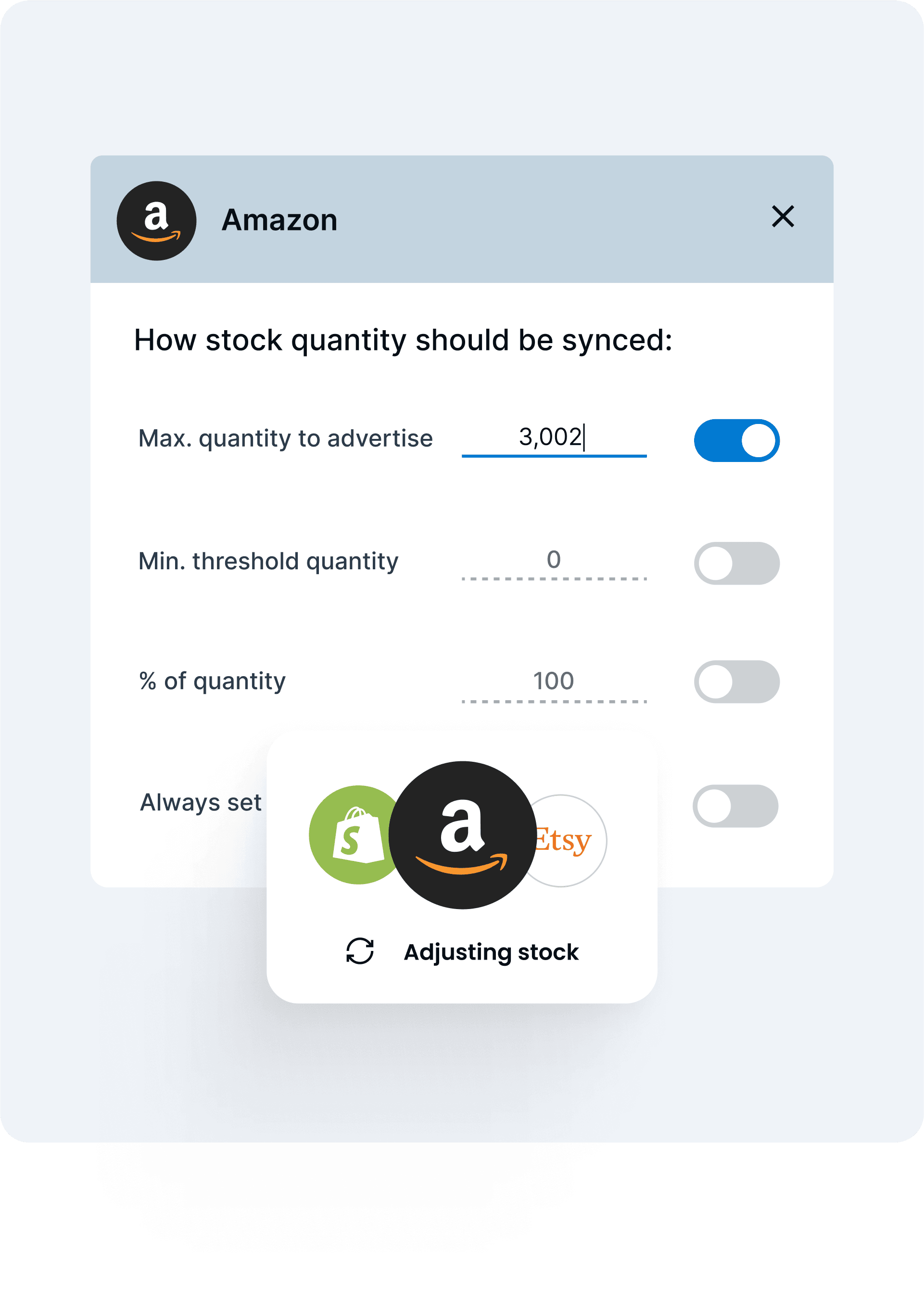
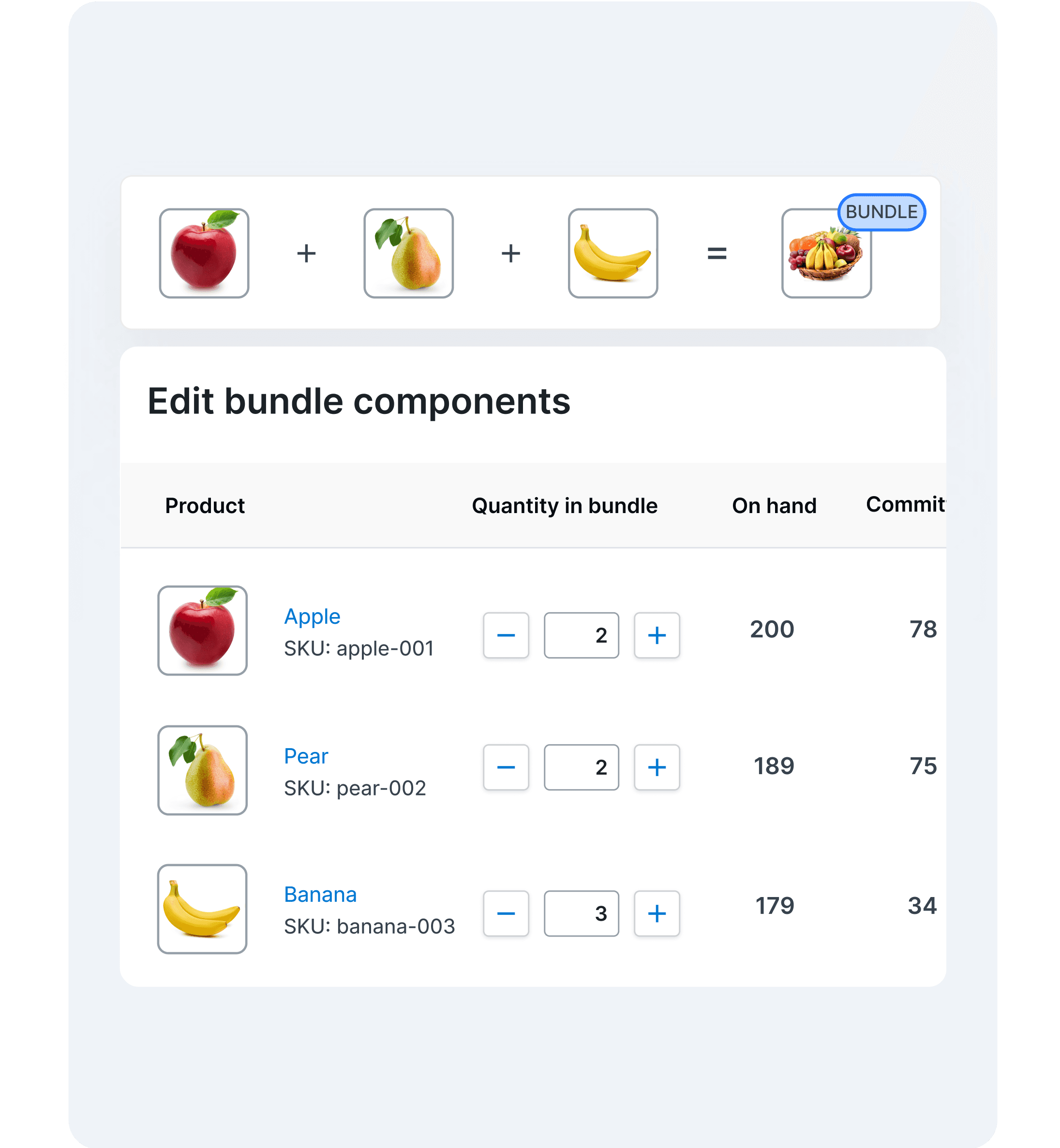
Sell products individually or in bundles
Sell products together for upsells, cross sells and marketing promotions across all your stores.
There's no need to set up stock in pre-packed kits - you can create bundles at any time through Veeqo's inventory page.
If you have old inventory or products you need to sell, bundle them together and let Veeqo track the inventory.
Enterprise-level software
without the price tag
Service
No. Shipments
No. Users
£ Cost
Unlimited
shipments per month
Unlimited
users
£0.00
per month
ShipStation
10,000
shipments per month
10
users
£175
per month
Channel Grabber
10,000
shipments per month
5
users
£249
per month
Shiphero
Unlimited
shipments per month
5
users
£1500
per month
£0.00pm
Unlimited shipments per month
Unlimited users
Pricing information sourced from https://www.shipstation.com/pricing/, https://channelgrabber.com/pricing/, https://shiphero.com/software/pricing. Last updated November 2023.
One decision for your business
that’s a no brainer
Create, edit, and assign permissions
Adjust account permissions for your team based on preset user roles in Veeqo (Admin, warehouse manager, customer service manager, etc.) or by feature permissions in Veeqo such as:
Store access
Digital picking
Email templates
Rules
Locations
Delivery methods
Reports
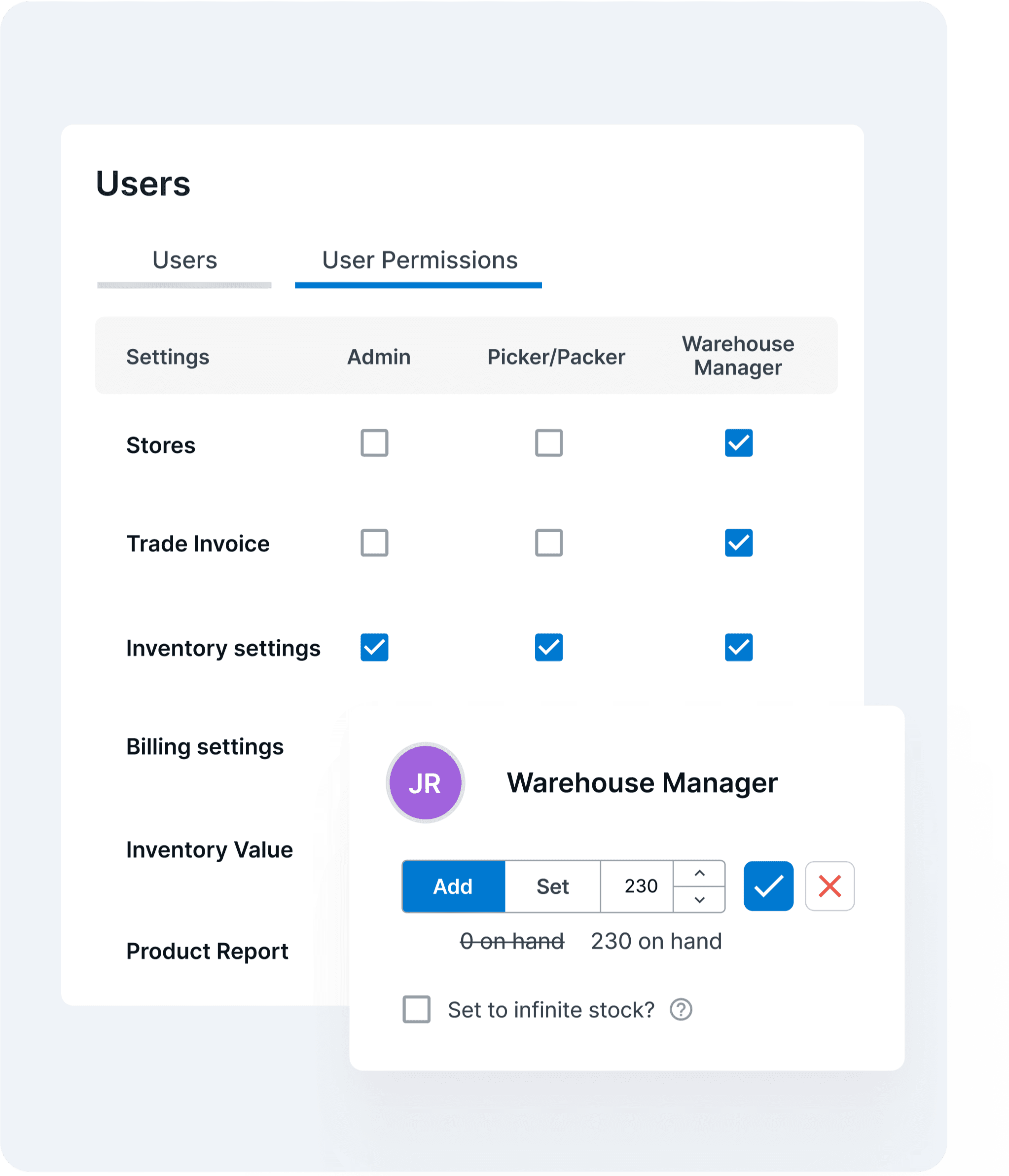

"Veeqo is a shipping software Swiss army knife for Amazon Sellers"
As a brand owner and director of multiple other online businesses, and the director of an Amazon agency, it could be difficult for me to handle numerous fulfilment options, sales reporting and inventory management all at once, but Veeqo makes it easy, and it's free.
Huw Morgan, Amazon Seller, Walrus Apparel



